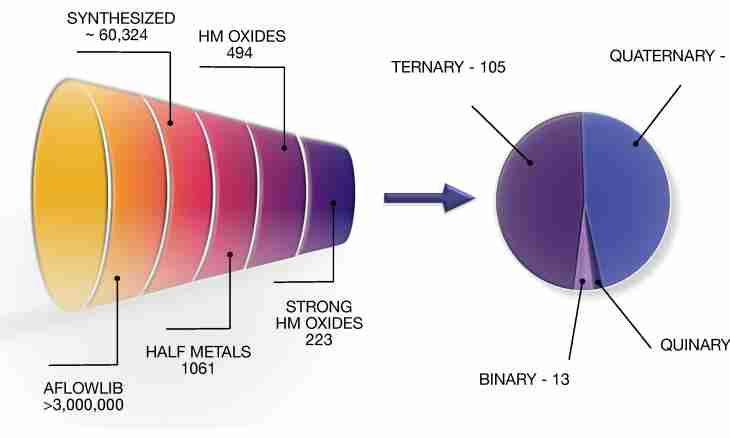The equivalent – such amount of chemical element which either connects or replaces one mol of atoms of hydrogen. Respectively, the mass of one equivalent is called the equivalent weight (Me), and is expressed in g/mol. On chemistry often set a task to determine the equivalent mass of any given substance (connection) for pupils. For example, metal and the oxide formed by it.
Instruction
1. First of all it is necessary to remember several simple rules. If it is about metal, its equivalent weight is calculated by a formula: Me = M/V, where M – the atomic mass of metal, and In – its valency. Consider this rule on concrete examples.
2. Calcium (Sa). Its atomic mass 40.08. In round figures take it for 40. Valency is equal to 2. Therefore, Me (Sa) = 40/2 = 20 g/mol. Al. Its atomic mass 26.98. (In round figures 27). Valency is equal to 3. Thus, Al = 27/3 = 9 g/mol.
3. The listed ways are applicable if it is about pure metals. And if they are a part of any compound, for example, of the same oxides? Here it is necessary to remember other rule: the equivalent mass of oxide is calculated on a formula: Me + Mo, where Mo – the equivalent mass of oxygen. It, respectively, is calculated by already considered M/V formula, that is 16/2 = 8.
4. Let's assume, you have main oxide of aluminum, Al2O3. How to count its equivalent weight? Very simply: 27/3 + 16/2 = 17 g/mol.
5. Whether there is other way of determination of equivalent mass of metal and its oxide? Yes, and very effective. It is based on the so-called law of equivalents according to which all substances react with each other in equivalent quantities. For example: metal weighing 33.4 grams reacted oxidations with air oxygen. As a result oxide with a lump of 43 grams turned out. It is required to determine the equivalent mass of the metal and its oxide.
6. At first calculate how many oxygen connected to metal during this reaction: 43 – 33.4 = 9.6 grams. According to the law of equivalents, this weight in as much times more the equivalent mass of oxygen (which, we will remind, it is equal to 8), how much the equivalent mass of metal is less than its initial quantity. That is 33.4/Me (me) = 9.6/8. Therefore, Me (me) = 33.4*8/9.6 = 27.833 g/mol, or in round figures 27.8 g/mol. Such is the equivalent mass of metal.
7. Find the equivalent mass of oxide the following action: 27.8 + 8 = 35.8 g/mol.

